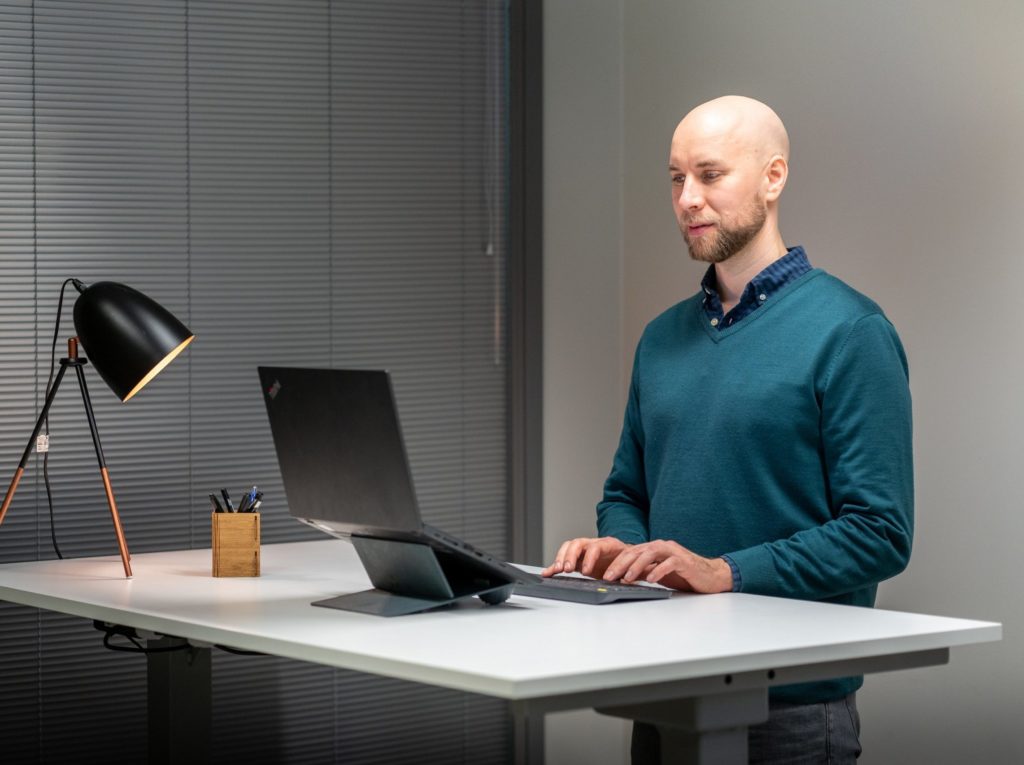You’ve likely experienced it: that mid-afternoon slump where your shoulders hunch forward, your neck cranes toward your screen, and your energy levels plummet. What you might not realise is that your posture and productivity are intimately connected. As we spend more hours at our desks, the way we hold our bodies becomes increasingly important for our work efficiency and overall wellbeing. The right ergonomic workplace setup doesn’t just prevent discomfort; it actually enhances your ability to focus, think clearly, and accomplish more throughout your workday.
How does poor posture affect your work performance?
The connection between your body position and brain function is more significant than most people realise. When you slouch at your desk, you’re not just causing potential back pain; you’re actually restricting your breathing capacity by up to 30%. This reduced oxygen intake directly impacts your brain’s function, leading to decreased cognitive performance and making complex tasks more difficult.
Poor posture also forces your body to work harder just to maintain balance, diverting energy that could be used for mental tasks. The body naturally compensates for misalignment by tensing muscles, which over time leads to fatigue that can make even routine tasks feel exhausting. This physical strain creates a cycle where discomfort distracts you, reducing focus and extending the time needed to complete projects.
Additionally, when your head juts forward to view a poorly positioned screen (a common position for many office workers), the resulting neck strain can trigger headaches that further undermine your concentration and productivity. Each centimetre your head moves forward from its optimal position adds approximately 4.5 kg of pressure to your neck and upper back muscles.
The hidden costs of workplace discomfort
Beyond the immediate physical effects, poor ergonomics creates substantial but often invisible costs. The average office worker loses about 14 minutes of productive time daily due to discomfort-related distractions and position adjustments. While this might seem minor, it accumulates to over 60 hours of lost productivity per year for each employee.
The financial impact extends beyond lost time. Workplace discomfort frequently leads to increased healthcare utilisation, with musculoskeletal disorders ranking among the top reasons for work absences. For employers, this translates to higher insurance costs and reduced workforce capacity. For individual remote workers, it often means out-of-pocket healthcare expenses and unpaid sick days.
Perhaps most concerning is how chronic discomfort affects job satisfaction and engagement. When physical discomfort becomes a constant companion during work hours, it naturally diminishes enthusiasm and creative thinking. This reduced engagement creates a subtle but persistent drag on career advancement and workplace innovation.
Movement matters: breaking the static posture cycle
The solution isn’t simply finding the “perfect” posture and maintaining it rigidly. In fact, research shows that even technically correct posture becomes problematic when held statically for too long. Your body is designed for movement, and incorporating regular position changes throughout your workday is vital for maintaining both comfort and productivity.
Dynamic movement at your workstation helps pump fresh blood and nutrients to your brain and muscles. Even small movements, like shifting weight while standing or adjusting your sitting position, can trigger improved circulation. This enhanced blood flow delivers more oxygen to your brain, supporting clearer thinking and better focus.
Adding intentional movement breaks throughout your day, such as brief stretching sessions or switching between sitting and standing positions, prevents the muscular imbalances that develop during prolonged static work. These movement opportunities serve as natural reset buttons for both your body and mind, helping maintain higher energy levels throughout the day.
Creating an ergonomic workspace that works
Building an effective ergonomic workstation doesn’t necessarily require expensive equipment. Start with these fundamental adjustments:
- Position your monitor at eye level, with the top of the screen slightly below eye height
- Place your keyboard so your elbows can rest at approximately 90 degrees
- Ensure your feet can rest flat on the floor (or use a footrest)
- Maintain about an arm’s length distance from your screen
If possible, incorporate a standing desk for improved posture and energy to alternate between sitting and standing throughout the day. This simple change can reduce back pain and increase energy levels. Adding a balance board for active standing workstations further engages your core muscles and promotes subtle movement that keeps your circulation active without distracting from work tasks.
For remote workers with budget constraints, improvised solutions can be remarkably effective. A laptop stand for proper ergonomic height paired with a separate keyboard can create proper screen height. A rolled towel can provide lumbar support for an ordinary chair, and a sturdy box can create a temporary standing desk option.
Simple posture exercises for busy workdays
These quick exercises can be seamlessly incorporated into your workday to reset your posture and refresh your mind:
| Exercise | Time Required | Benefits |
|---|---|---|
| Shoulder rolls (10 forward, 10 backward) | 30 seconds | Releases upper back tension; improves shoulder mobility |
| Seated spinal twist (hold 15 seconds each side) | 45 seconds | Relieves lower back pressure; increases spinal mobility |
| Neck stretches (tilt ear to shoulder, hold 10 seconds each side) | 30 seconds | Reduces neck stiffness; prevents tension headaches |
| Wrist and finger stretches | 20 seconds | Prevents repetitive strain; improves typing comfort |
Urheilupuolen tuotteemme most effective approach is setting a timer to remind yourself to perform one of these exercises every 45-60 minutes. This regular movement not only resets your posture but also gives your brain a microbreak, allowing you to return to tasks with renewed focus.
Remember that consistent small efforts yield better results than occasional intensive corrections. Even 10-second micro-stretches throughout your day can significantly reduce discomfort and maintain your energy levels.
At Gymba, we understand how proper ergonomics and regular movement transform not just how you feel at work, but what you can accomplish. By implementing these simple strategies, you’re investing in both your immediate comfort and your long-term career performance. The connection between posture and productivity isn’t just theoretical; it’s a practical opportunity to work better every day.

